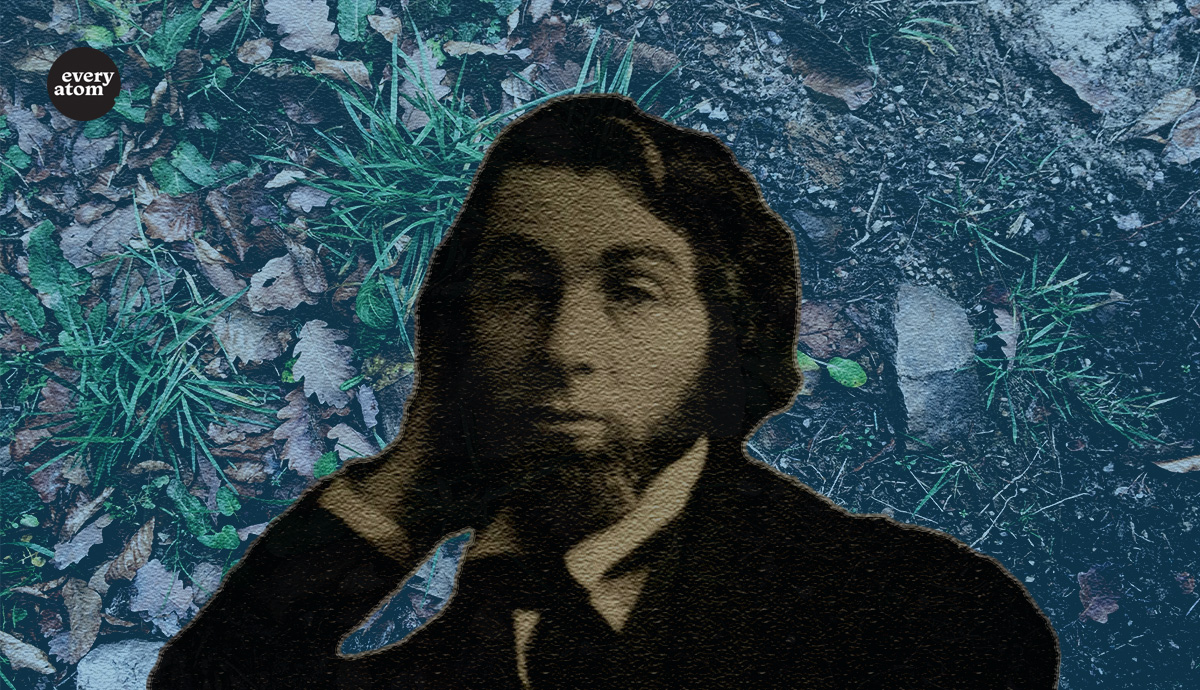Every Atom | No. 60
Introduction to Every Atom by project curator Brian Clements
Near the end of “Song of Myself,” Whitman’s bardic speaker—concluding his mystical integration of self, comrades, nation, and kosmos—unites with the earth: his physical legacy will be the fertile soil, grass-grown, beneath the feet of the common American.
Whitman included that passage in the first edition of Leaves of Grass in 1855, and it remained there, unchanged, until the “Deathbed Edition,” completed in 1892.
Unlike martial epics, “Song of Myself” begins languorously with what comes easiest to hand: “I lean and loafe at my ease observing a spear of summer grass.” After establishing his voice and presence, the poet dramatizes the reader’s innocent question:
A child said, What is the grass? fetching it to me with full hands;
How could I answer the child?....I do not know what it is any more than he.
All of us, Whitman suggests, are helpless before the humblest manifestations of life: “a mouse is miracle enough to stagger sextillions of infidels,” he says later.
Grass, of course, is common and universal; it is not a cultivated flower. Each blade or “leaf” stands alone, an individual life, but collectively the grass covers the soil and binds it together, as it did on the prairies Whitman celebrated in “Pioneers! O Pioneers!”
In “Song of Myself,” the grass is a symbol that completes the circle of birth and death. The poet envisions it as “the mothers’ laps” from which we are born, but it is also “the beautiful uncut hair of graves,” growing wild between the tombstones.
Whitman will catalogue hundreds of individual people—machinist, immigrants, connoisseur, opium-eater, prostitute, and President—but all of them are connected by a deeper oneness:
O I perceive after all so many uttering tongues!
And I perceive they do not come from the roofs of mouths for nothing.
And what do those tongues have to say? That as important as the self is, it remains tied to others, no matter how different they may seem. As the scholar Ed Folsom put it, “Whitman looked at those unlike himself and thought ‘that person could be me.’”
Whitman was, for his time, a visionary of the American—and ultimately global—compact between the individual and the community. He was not a mere nationalist; Whitman promoted what his disciples called a “cosmic consciousness” in which everyone and everything is inherently “a hub for the wheel'd universe.”
“I believe a leaf of grass,” Whitman writes, “is no less than the journey-work of the stars.”
It may surprise us to remember that Whitman chose not to bequeath himself to the dirt—to contribute his atoms to future lives—but instead to be entombed in a granite mausoleum of his own design in Camden’s Harleigh Cemetery. By the end of his life, Whitman had become an eminent Victorian, a friend of millionaires as much as of the common American—and one who craved lasting fame.
Leaves of Grass, once a wild meadow, eventually became a topiary garden.
My students often talk about the “ideal Whitman” of his poems and the “real Whitman” of his biographers. Even he admitted, “I don’t know which Walt Whitman I am.” Each of the many editions of Leaves of Grass is distinctive and reflective of its times, from the decade before the Civil War to the Gilded Age.
Considering the carvings on the trees—along with an endless flow of tokens, poems, notes, and handfuls of grass—Whitman’s tomb—perhaps as he planned—remains a site of literary and spiritual pilgrimage as we begin the third century since his birth.
Whitman, in his poetry, still reminds us that life is miraculous, death is not to be feared, and that we are individuals deeply connected to each other, and one with the cosmos.
Recommended
Nor’easter
Post-Op Appointment With My Father
Cedar Valley Youth Poet Laureate | Fall 2024 Workshop







